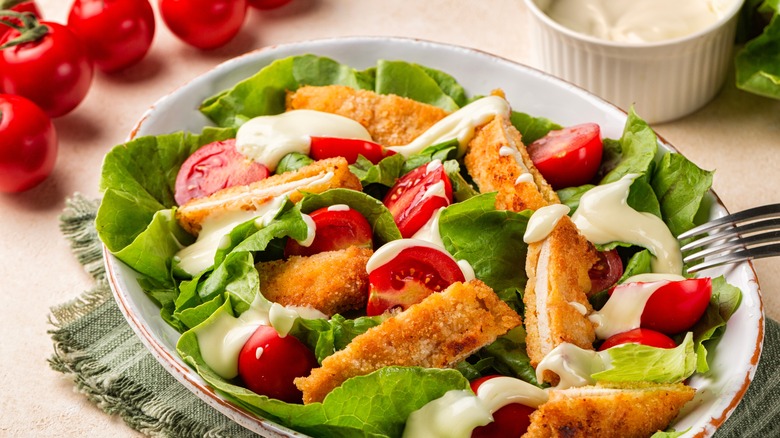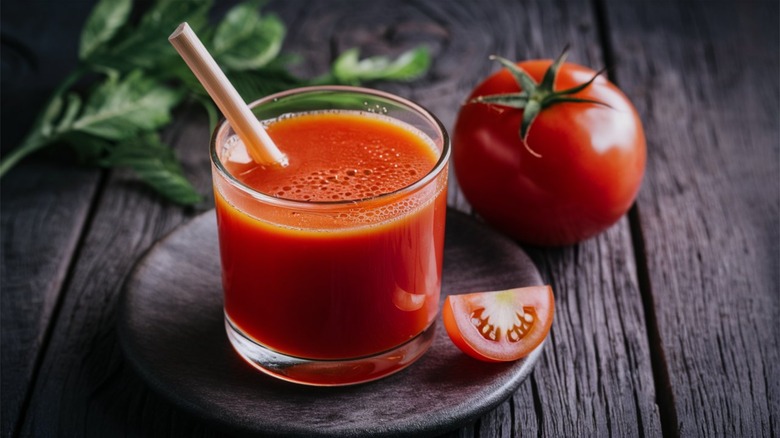The Unexpected Juice That Shines In Salad Dressing
Every good salad dressing contains several crucial components, including some form of acid. A vinaigrette, for instance, would be nothing but a flavorless, oily mess without an acidic squeeze of lemon juice or a dash of balsamic vinegar. Acid can be incorporated into your salad dressing through a number of ingredients, from fresh lime to even pickle juice.
Another option you might have on hand? Tomato juice. Punchy and unexpected, tomato juice can add the perfect acidic kick to your next dressing. Simply squeeze a hearty tomato to extract some of its juice; if you can access heirloom or locally grown tomatoes, even better. Try mixing the tomato juice with another acid — like red wine or sherry vinegar — for a dressing that's light with just the right amount of sweetness. It's important to maintain a well-seasoned mixture: Salt the dressing and taste as you go while incorporating a fat, like olive or avocado oil.
Salads, cold and warm
To match the bright flavor of your tomato vinaigrette, try pairing it with a similarly savory-sweet combination, like a grilled peach, cucumber and tomato salad. Or toss it into a traditional tomato panzanella studded with crusty pieces of bread — perfect for absorbing your new favorite dressing. Pairing tomato vinaigrette with a tomato-based salad is always a solid choice, allowing eaters to enjoy two different preparations of the same beloved produce.
Once tomatoes are roasted and pureed, they can add yet another level of flavor to a salad dressing. Caramelize sun gold or cherry tomatoes in the oven before blitzing them with red wine vinegar, olive oil, garlic, salt, and pepper. The end result? A deeper, more complex flavor that marries perfectly with warm salads and roasted vegetables. Toss your tomato vinaigrette into a farro salad with asparagus, a hearty bowl of veggie pesto quinoa with charred red peppers and chickpeas, or a classic Mediterranean-inspired pasta salad.

